Sep
18
2025
Insurance, Risk Management & Having the Right Team: What Jeremiah Smith’s Move Teaches Athletes About Financial Planning
Introduction: A Sophomore Setback Avoided Before It Happens
Ohio State freshman wide receiver Jeremiah Smith has already made a burst into the spotlight and not just for his stats. Before the College Football Playoff began, his family secured a permanent total disability (PTD) insurance policy to protect his future earnings in the event of a career-ending injury. (Bleacher Report)
Smith's action isn’t typical, especially for someone two years away from NFL draft eligibility. But it highlights a principle that every athlete, especially young and high-performing ones, should understand: risk management is essential. It’s not about expecting disaster, but about preparing wisely so that what you build today isn’t lost tomorrow.
1. Understanding What Smith Did and Why It Matters
The insurance is issued by Leverage Disability and Life Insurance, which is the same provider that has covered other top athletes like Bryce Young and Will Anderson Jr. (Athlon Sports)
The policy is a PTD (permanent total disability) policy, meaning it provides a lump-sum payout if he suffers an injury so severe that he can no longer play football (or possibly perform other activities covered under the policy). It even covers injuries off the field. (CBSSports.com)
Cost: approximately $7,500–$8,000 per million dollars of coverage. For example, a $20 million policy would cost about $150,000 in premiums annually. (Bleacher Report)
Why this matters:
- Many high‑potential athletes rely only on upside. But sports carry real injury risk, and earnings potential is front‑loaded: performance, exposure, draft stock, etc. If that ends early, there’s often no fallback.
- Insurance like this mitigates a catastrophic downside, protecting what could be huge future contracts and endorsements.
2. Risk Management Planning: Key Components
Using Smith’s example, here are critical parts of a strong risk management plan for athletes:
A. Insurance (Disability / Career‑Ending)
- PTD or similar coverage to protect against permanent disability.
- Consider adding Loss of Draft Value (LOV) riders: if injury or performance decline causes your draft stock to fall, this can help. (Smith does not currently have LOV) (Athlon Sports)
- Consider insurance for non‑football injuries too (off-field risk). Smith’s policy reportedly covers both on‑field and everyday risks. (Athlon Sports)
B. Financial Reserves & Budget Buffer
- Even with insurance, having emergency savings is essential. Because payouts may be delayed, or certain conditions might need to be met.
- Budget for premiums and maintain cash flow so that insurance costs do not eat into needed expenses or investments.
C. Long‑Term Thinking
- Smith’s policy lasts until August 1, 2027, or until he signs an NFL contract, whichever comes first. (Athlon Sports)
- Think beyond the next game or season. Contract obligations, potential earnings, endorsements, and injury risk all must be considered over multiple years.
3. The Importance of Building a Trusted Advisory Team
Insurance alone is not enough. To execute risk management well, an athlete needs a solid team. Smith’s move likely involved:
- Insurance Broker or Specialist who understands athlete insurance policies, coverage types, riders, and what’s standard vs what’s premium.
- Legal Advisor to review contract terms, understand clauses, and ensure that the insurance does not conflict with future contracts.
- Financial Planner / Wealth Advisor who can help allocate capital, forecast expenses, manage taxes, and ensure payments for premiums are sustainable.
- Mentor / Coach / Support Network who advises on the non-financial side: helps keep perspective, prevents overconfidence or overspending, helps with decisions when stakes are high.
4. Lessons Athletes Should Take from this Example
- Don’t Wait — Elite athletes who “might” go pro should consider insurance before the big exposure, because visibility increases scrutiny and value and so does risk. Smith did this as a freshman.
- Understand Cost vs Benefit — Premiums aren’t cheap, but if the policy protects tens of millions or even a smaller but career‑ending downside it may be a bargain.
- Document Everything & Plan Early — Medical exams, performance history, injury records. Insurance underwriting requires good medical history. Starting early improves terms.
- Balance Lifestyle & Protection — It’s easy to spend hard on gear, cars, etc., but protecting upside might mean delaying or scaling back certain lifestyle costs in favor of long-term security.
5. Barriers & Considerations
- Insurance policies have exclusions: certain pre-existing injuries, certain risky behaviors, timing, required medical exams.
- Premiums can be high, especially for large coverage amounts. Must be financially feasible.
- Some athletes or families may lack access to top-tier brokers. Policies may be denied or rated up (higher cost) if risk is deemed too high.
- Insurance payout claims might be contested; legal clarity in policy wording is critical.
Conclusion: Protecting Potential Is Smart Planning
Jeremiah Smith’s decision to secure PTD insurance before the College Football Playoff shows wisdom not fear. It underscores how the best athletes plan beyond the field, preparing for the unpredictable while maximizing the predictable.
If you’re an athlete or advising one take a page from Smith’s playbook:
- Evaluate what risks matter for you
- Get quotes, compare coverage types, riders
- Build the right advisory team
- Weigh premium cost vs protected potential
Want help putting together your risk management strategy?
Courtside Wealth Partners offers tailored protection planning: from insurance, legal revues, tax forecasting, to overall financial strategy. Let’s ensure the financial future you’re aiming for is protected every step of the way.
